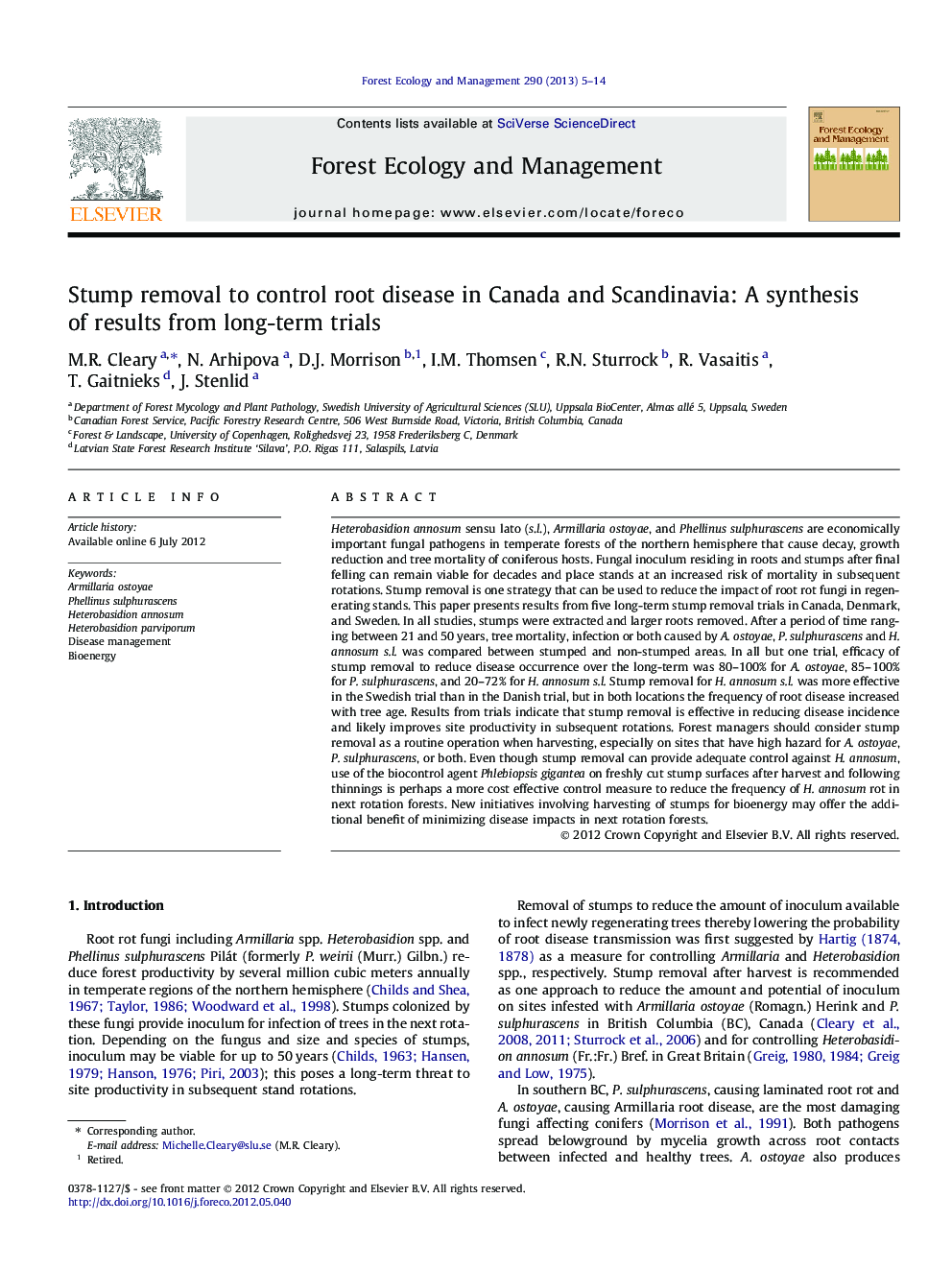| کد مقاله | کد نشریه | سال انتشار | مقاله انگلیسی | نسخه تمام متن |
|---|---|---|---|---|
| 87154 | 159235 | 2013 | 10 صفحه PDF | دانلود رایگان |

Heterobasidion annosum sensu lato (s.l.), Armillaria ostoyae, and Phellinus sulphurascens are economically important fungal pathogens in temperate forests of the northern hemisphere that cause decay, growth reduction and tree mortality of coniferous hosts. Fungal inoculum residing in roots and stumps after final felling can remain viable for decades and place stands at an increased risk of mortality in subsequent rotations. Stump removal is one strategy that can be used to reduce the impact of root rot fungi in regenerating stands. This paper presents results from five long-term stump removal trials in Canada, Denmark, and Sweden. In all studies, stumps were extracted and larger roots removed. After a period of time ranging between 21 and 50 years, tree mortality, infection or both caused by A. ostoyae, P. sulphurascens and H. annosum s.l. was compared between stumped and non-stumped areas. In all but one trial, efficacy of stump removal to reduce disease occurrence over the long-term was 80–100% for A. ostoyae, 85–100% for P. sulphurascens, and 20–72% for H. annosum s.l. Stump removal for H. annosum s.l. was more effective in the Swedish trial than in the Danish trial, but in both locations the frequency of root disease increased with tree age. Results from trials indicate that stump removal is effective in reducing disease incidence and likely improves site productivity in subsequent rotations. Forest managers should consider stump removal as a routine operation when harvesting, especially on sites that have high hazard for A. ostoyae, P. sulphurascens, or both. Even though stump removal can provide adequate control against H. annosum, use of the biocontrol agent Phlebiopsis gigantea on freshly cut stump surfaces after harvest and following thinnings is perhaps a more cost effective control measure to reduce the frequency of H. annosum rot in next rotation forests. New initiatives involving harvesting of stumps for bioenergy may offer the additional benefit of minimizing disease impacts in next rotation forests.
► The efficacy of stump removal for controlling root disease are reported.
► Stump removal gave adequate control against Heterobasidion annosum.
► Efficacy of stumping was 80–100% for Armillaria ostoyae and 85–100% for Phellinus sulphurascens.
► Reduced disease incidence caused by stump removal improves site productivity.
► Stump harvesting initiatives for bioenergy may partially offset treatment costs.
Journal: Forest Ecology and Management - Volume 290, 15 February 2013, Pages 5–14